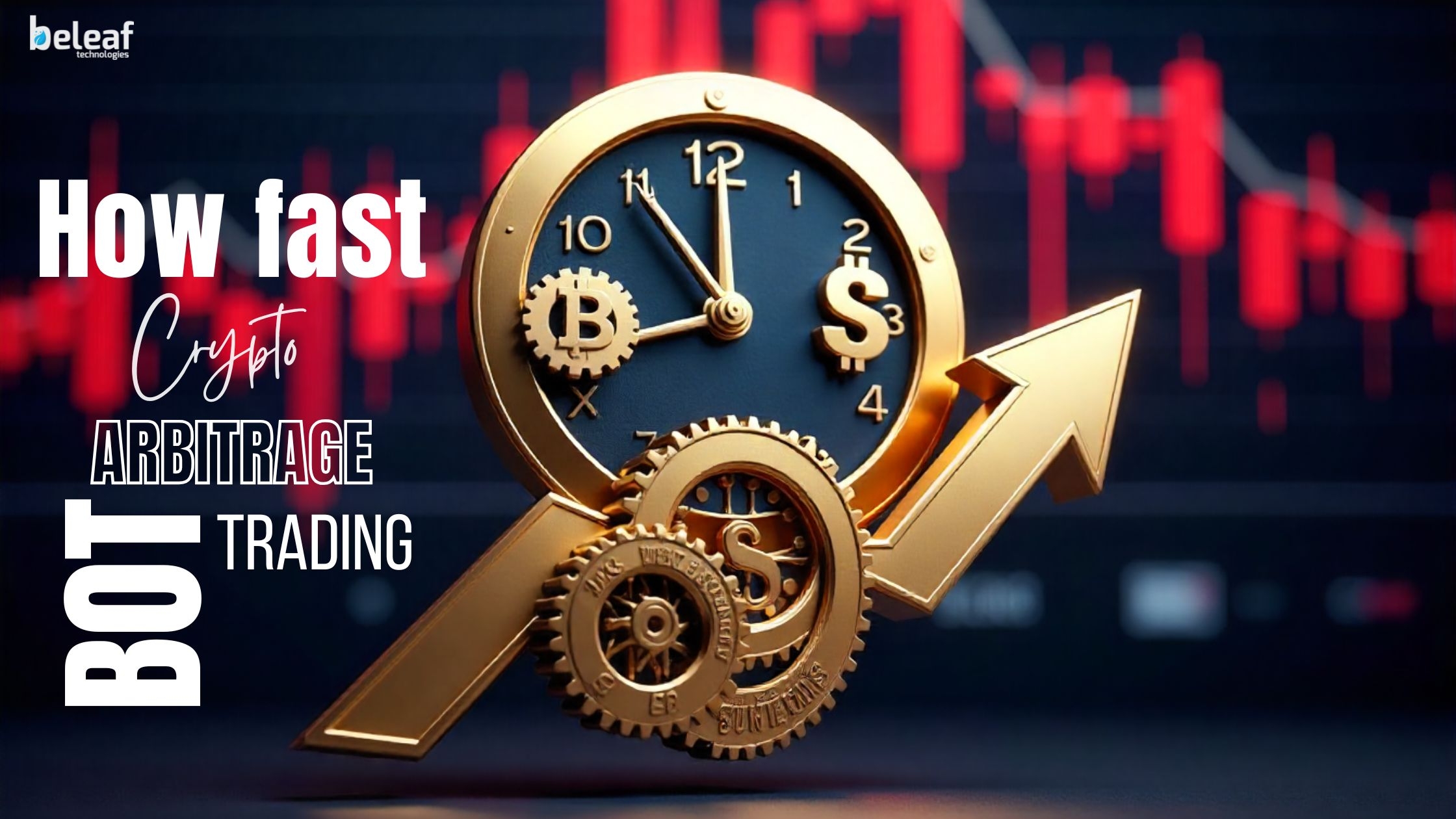In the world of cryptocurrency trading, speed is everything. Arbitrage trading buying an asset on one exchange at a lower price and selling it on another at a higher price has long been seen as one of the safest profit-making strategies. But in practice, success depends on a single factor: how fast a crypto arbitrage bot can operate. Even the slightest delay can turn a profitable trade into a missed opportunity.
Why speed is the backbone of arbitrage
Crypto markets run 24/7 across hundreds of exchanges worldwide. Unlike traditional markets, they never sleep, and their prices can change in fractions of a second. Arbitrage opportunities arise when there are price gaps across platforms, but these windows are incredibly short-lived.
That’s why speed isn’t just important, it's the very foundation of arbitrage success. A bot that takes too long to identify an opportunity or execute a trade often ends up with no profit, or worse, a loss.
Simply put: a slow bot is a losing bot.
The required speed for profitability
To stay profitable, arbitrage bots need to operate at three critical levels of speed:
-
Market Scanning Speed
Bots must scan hundreds of pairs across multiple exchanges in real time. Every millisecond counts because the faster the scan, the quicker the opportunity can be identified. -
Execution Speed
Recognizing a profitable gap is only half the battle. A bot also needs to place buy and sell orders instantly. Delays of even a second may cause the price gap to close. -
Settlement Speed
In blockchain-based transactions, settlement times can make or break profits. While some blockchains process transactions almost instantly, others face congestion, which slows everything down. A profitable bot must be optimized to adapt to these conditions.
Why milliseconds matter
Let’s take an example.
-
On Exchange A, Bitcoin is priced at $27,400.
-
On Exchange B, Bitcoin is priced at $27,450.
-
The price difference of $50 is an arbitrage opportunity.
If the bot acts within milliseconds, the profit can be captured. But if there’s even a 2–3 second delay, the price difference often vanishes as other traders (and bots) exploit it.
This is why advanced arbitrage bots are built for ultra-low latency, ensuring trades are executed before opportunities close.
Factors affecting a bot’s speed
Several technical and environmental factors influence how quickly an arbitrage bot can act:
-
Exchange API Latency – Some exchanges have faster APIs than others, and efficient integration reduces delays.
-
Server Location – Hosting the bot close to an exchange’s servers (through VPS or dedicated hosting) can cut milliseconds off response times.
-
Blockchain Congestion – Networks like Ethereum can slow down during heavy traffic, while others like Solana or Binance Smart Chain often perform faster.
-
Bot Architecture – Lightweight, optimized coding and algorithms allow for faster data processing and execution.
Staying profitable in real-world trading
Arbitrage trading is competitive, with many traders and bots chasing the same opportunities. To consistently stay profitable, bots must combine speed with intelligence. This often involves:
-
Monitoring multiple exchanges simultaneously.
-
Prioritizing the best opportunities rather than chasing all of them.
-
Using risk management filters to avoid low-liquidity traps.
-
Adapting to network and market conditions in real time.
Profitability doesn’t just depend on how quickly a bot reacts it also depends on how smartly it chooses trades.
The role of customization in speed
Generic bots may work for basic scenarios, but they often lack the precision and optimization needed to stay consistently profitable. Custom-built arbitrage bots can be fine-tuned to:
-
Target specific exchanges.
-
Optimize settlement on certain blockchains.
-
Scale efficiently to handle thousands of trades per second.
-
Minimize latency through advanced coding.
Such customization ensures the bot is not just fast, but also strategically aligned with a trader’s goals.
Why speed gives the winning edge
The bottom line is clear: arbitrage opportunities vanish quickly, often within seconds. Traders who rely on bots that scan markets in real time, execute trades instantly, and adapt to blockchain conditions will consistently capture profits. Those who use slower or poorly optimized bots will often be left behind.
In arbitrage trading, speed is not just an advantage, it's the deciding factor.
Final Thoughts
A crypto arbitrage bot needs to operate at lightning speed to stay profitable. From scanning prices across exchanges to executing trades and settling transactions, every millisecond matters. A bot that is optimized for low latency, fast execution, and smart adaptability is far more likely to succeed in capturing fleeting opportunities.In the fast-paced crypto markets, success doesn’t go to the biggest trader or the one with the most funds it goes to the one with the fastest, smartest bot.


